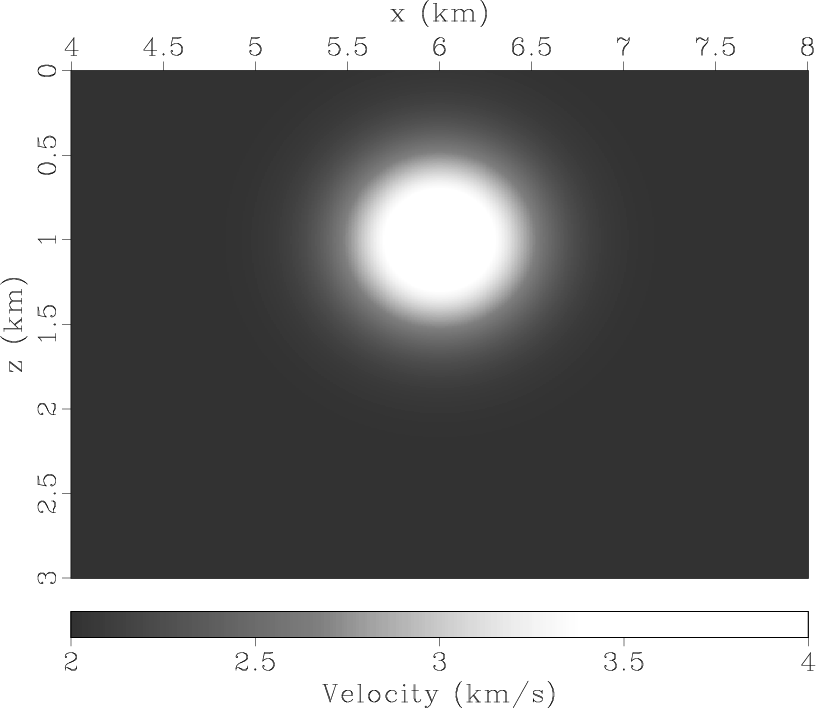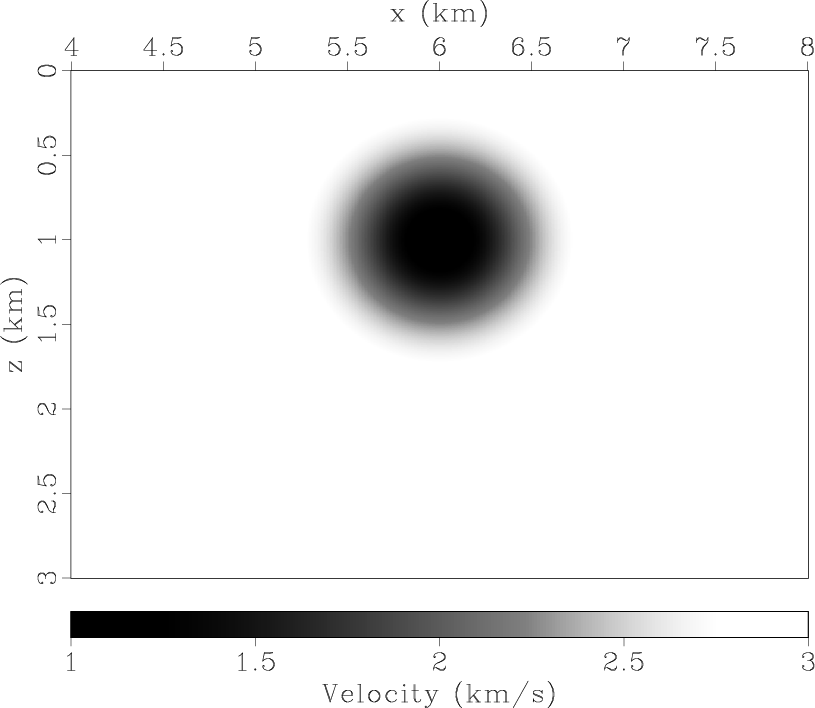|
|
|
|
Huygens wavefront tracing: A robust alternative to conventional ray tracing |

|
|---|
|
gp-velocity
Figure 5. A Gaussian positive velocity anomaly. The background velocity is 2.0 km/s, and the maximum anomaly at the center is +2.0 km/s. |
|
|

|
|---|
|
gn-velocity
Figure 6. A Gaussian negative velocity anomaly. The background velocity is 3.0 km/s, and the maximum anomaly at the center is -2.0 km/s. |
|
|
We have selected these velocity models to test the way our method applies to different patterns of velocity variation. In the case of the negative anomaly, the rays focus inward, while in the case of the positive anomaly the rays spread outward.
The distribution of rays as obtained with the PRT and HWT methods are presented in Figure 7 for the positive anomaly, and in Figure 8 for the negative.

|
|---|
|
gp-velrw
Figure 7. The rays obtained in the case of the Gaussian positive velocity anomaly. We present the rays obtained with the PRT method (left) and with the HWT method (right). The source is located on the surface at x=6.0 km. |
|
|

|
|---|
|
gn-velrw
Figure 8. The rays obtained in the case of the Gaussian negative velocity anomaly. We present the rays obtained with the PRT method (left) and with the HWT method (right). The source is located on the surface at x=6.0 km. |
|
|
One way to compare the two methods is to compute the distance between the points that correspond to the same ray, identified by the same take-off angle, at the same traveltimes. This is obviously not a perfect quantitative comparison, because once two rays, obtained with the two methods, become slightly divergent, they keep going in different directions, and thus the distance between corresponding points keeps growing (Figures 9 and 10). However, this effect is not necessarily a manifestation of decreasing precision. It can be easily seen that if such an angular mismatch doesn't occur, the rays maintain practically the same path (see, for example, the rays shot in the (-20,-40) and (20,40) degree intervals, where the distance decreases in many cases to almost zero). Even in the case of divergent rays, the distance is kept to a reasonable level (less than 1%). Consequently, we do not interpret these differences as error.
|
gp-diff
Figure 9. The distance between the corresponding points on the rays obtained with the PRT method and with the HWT method. Distances are given in meters. |

|
|---|---|
|
|
|
gn-diff
Figure 10. The distance between the corresponding points on the rays obtained with the PRT method and with the HWT method. Distances are given in meters. |

|
|---|---|
|
|
|
|
|
|
Huygens wavefront tracing: A robust alternative to conventional ray tracing |